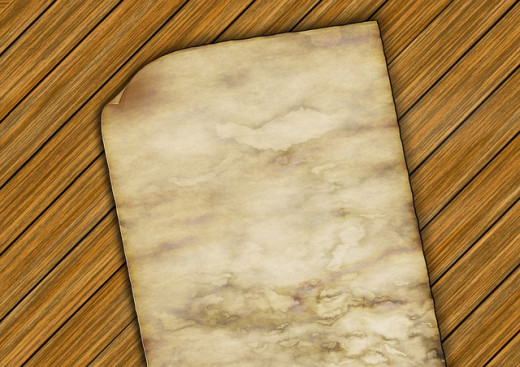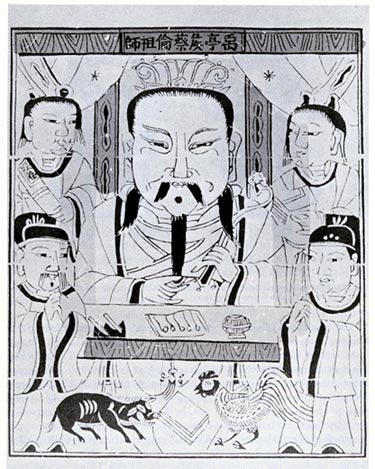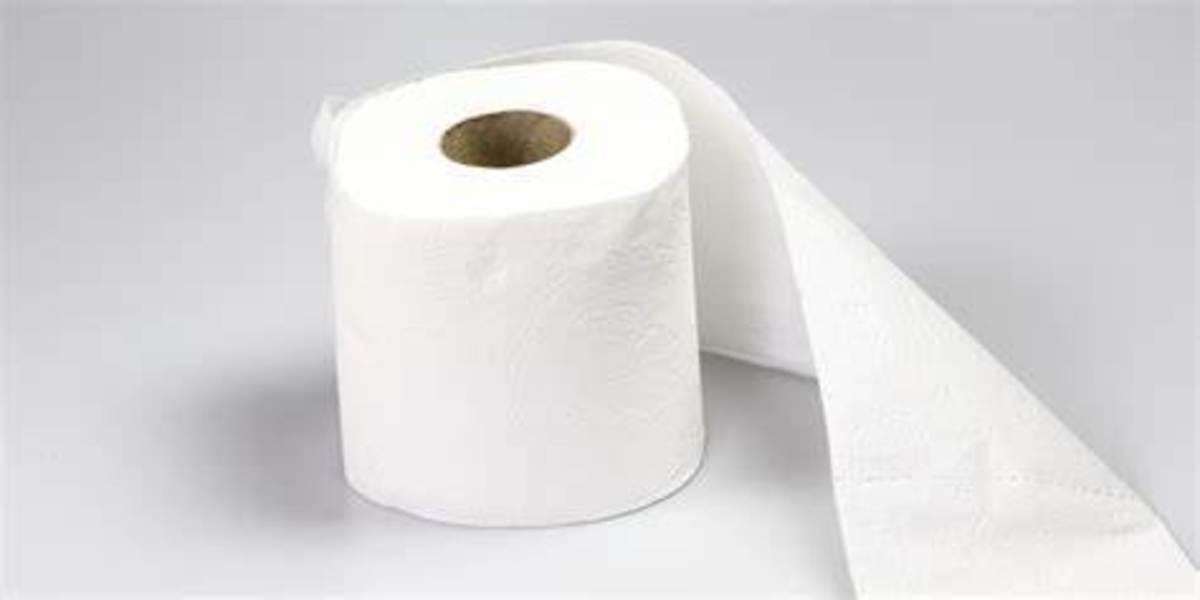The History of Paper and the Environment
The History of Paper

Paper and the Development of Society
It is thought by some historians that paper was one of the most important components in the cultural progression of mankind. The theory is based on the observation that Ancient China was less developed than that of the West until they used paper to write on instead of bamboo.
It was during the Renaissance that paper was introduced to Europe, and from that point on, many other innovations came along, including the printing press.
The invention of paper is considered to be one of the most important inventions to advance mankind. Today, paper is an integral part of our everyday existence. Each person in the United States uses about 675 pounds of paper each year.
Think about all the things paper is a part of, from the books, magazines, and newspapers we read, (except those that are electronic) to the money we use, and our use of napkins, paper plates, toilet paper, entertainment tickets, statements, envelopes, boxes, bags and containers we use daily. Have you ever gone a day without using something that is made of paper? Probably not.
Do You Need Paper?
History of Paper
Historians view paper, as one of the keys to cultural development.
We take paper for granted but there was a time when people had the ability to write but no paper to write on. Paper serves many purposes. We write on it, print on it, blueprints are drawn on it, money is made from it, from paper towels, napkins, to toilet paper, we use paper for many things, everyday, several times a day.
From newspapers, books, magazines envelopes, letters, and the pads of paper we write on, paper is something we all use daily and rely on.
From the caves on walls to the iPads of today, man has always had the need to write on something. Writing has been tried on wood, ceramics, stone, cloth, metal, bamboo, silk, leaves, bark from trees and countless other items, yet it is paper that has been the most enduring surface to write on.
The Origins of Paper

Papyrus
The word paper comes from papyrus ( a plant grown in ancient Egypt, Rome, and Greece). It can be traced back to as early as 3000 B.C.E. The Egyptians recorded history on reeds grown along the Nile River, called papyrus, which means “belonging to the house”. Cyperus papyrus can grow up to 15 feet(4.5 meters). The stem is green and triangular with sharp leaves and flower clusters that are 10-20 inches long (20-50 cms). The flowers grow at the tip. The stem of the plant is used for many things such as mattresses, boats, chairs and papyrus writing material.
Papyrus was used by a Roman writer to detail how papyrus was made. The outside layer of the stem is removed, exposing an inner layer that is sliced into long strips, and placed with another layer placed on top of the first at a right angle. These layers are soaked in water and pressed under a big rock for 3 weeks. The 2 layers become stuck together as the juice of the plant forms a glue like bond. the sheets are hammered flat and the let to bake in the sun to dry.
Ancient Greeks and Romans used the same method to make papyrus. But it is the Egyptian papyrus that survived the thousands of years, due to the climate preserving it. Egyptians used papyrus for approximately 4,000 years until other trees and plants were used.
In areas with cooler temperatures, vellum was used because papyrus can only grow in warm climates. Vellum is made from sheepskin or calfskin.
The Inventor of Paper

China and Paper
In China, bamboo was the common surface that was written on. But bamboo was awkward and heavy to bring from place to place. Silk was occasionally used, but due to it being so expensive, was not practical.
Paper as we have come to know it, was invented by a Chinese man named Ts'ai Lun. His process invented about 105 A.D., using cotton rags. By 610 A.D in Japan, bamboo fibers and the inner bark of a mulberry tree,were used to make a good surface to write on.
For paper making Lun had tried certain materials like hemp, bark, silk and even fishing net, until he finally decided to use wood pulp (which is from the pulpwood tree.) Sadly though his exact formula for paper making has been lost in history. Unlike our normal paper that we use today Chinese paper was very thin and translucent (partly see-through.) So they could only write on one side of paper, it was just too thin to write on both sides.
Around the 10th century, Arabians started using linen fiber instead of the bamboo and wood fibers and made a finer, better quality sheet of paper.
They used hemp and linen rags as a source of fiber. Preparation of the fibers, which is the material to be used for making paper is first converted into pulp, a concentrated mixture of fibers suspended in liquid. Once the fibers have been extracted, they may also be bleached or dyed to alter the appearance of the final product.
By the 12th century, Europe learned how to make paper too. German inventor, Johannes Gutenberg invented the printing press in 1448. With the advent of the printing press, the demand for paper increased.
Paper Changes the Economy
The methods to make paper spread to the Middle East, India, and Italy around the 13th century. Their source of fiber for paper came from hemp and linen rags.
Only 19 years after the Pilgrims stepped foot on American soil, a printing press was set up in Cambridge, Massachusetts, with paper being shipped from England and from other parts of Europe.
In Germantown, PA, William Rittenhouse built a paper mill in 1690. As the population of the New World increased, more and more paper mills were set up in populated areas.
In 1789, Nicolas- Louis Robert invented a paper making machine that made paper on a continuous sheet of wire cloth. The machine was refined in 1804 by 2 brothers, Henry and Sealy Fourdrinier,in England.Their new machine increased the production of paper from about 60 to 100 pounds per day to about 1,000 pounds per day. As time went on, the cost of paper dropped lower and lower.
Paper was probably one the most influential causes for changes in the economy during the 1800’s. The fountain pen was invented, pencils were mass produced, and the rotary printing press were all invented due to the invention of wood based paper.
Before this era, a book or a newspaper was a rare luxury object, and illiteracy was the norm. With the gradual introduction of cheap paper, schoolbooks, fiction, nonfiction, and newspapers became slowly available to nearly all members of society. Cheap wood-based paper also meant that keeping personal diaries or writing letters ceased to be reserved to a privileged few. The office worker or the white-collar worker was slowly born of this transformation, which can be considered as a part of the industrial revolution.
If You Would Like to Make Your Own Paper
Make Your Own Paper
Paper and the Environment
Here are some interesting paper facts:
-
one tree makes 8,333 sheets of paper
-
a ton of paper equals 200,000 sheets of paper
-
the average office worker in the U.S. prints about 10,000 pages of paper per year
-
90% of people with a printer at home printout content from the internet
-
Over ½ of people aged 45-54 print pages from the internet
-
About ⅓ of people aged 18-34 print pages from the internet
-
the U.S. pulp and paper industry uses more water to produce a ton of product than any other industry and is the second largest consumer of energy
In the United States papermaking materials come from three main sources:
-
Recycled paper: 33 percent
-
Whole trees and other plants: 33 percent
-
Wood chips and scraps from sawmills: 33 percent
-
15,000 less paper was used by the average North American in 2009 compared to 2005.
-
But the average North American at the end of the last decade used as much paper as six people combined in Asia or more than 30 people together consumed in Africa.
- But in 2009 China used more paper than people in North America for the first time.
- Paper can not be recycled indefinitely
Over 5,000 products can be made from recycled paper, here a just a few:
- Writing paper
- Paper towels
- Masking tape
-
Paper money
-
Globes
-
Bandages
-
Dust masks
-
Hospital gowns
-
Coffee filters
-
Lamp shades
-
Car insulation
-
Animal bedding
-
Planting pots for seedlings
-
Egg cartons
Paper has been used to share the works of the greatest writers in time, for novels, for the Bible, for newspapers, magazines, and comic books. Our most cherished pieces of artwork from our children, the love notes we have written and received, and the mail that comes are all written on paper. Paper makes up the labels on our bottled drinks to the boxes of food we buy.
Paper is the blueprints that design the homes we live in, and the architectural designs of big and little cities, of town parks, of the cars we drive. From dollar bills to our diplomas, drivers license, marriage license, and other momentous events in our lives, paper is the basis of much of the physical world around us. As the electronic age begins to reduce our use of paper, the influence this product has had on our history, on society and on each of us as individuals, will always be monumental.









